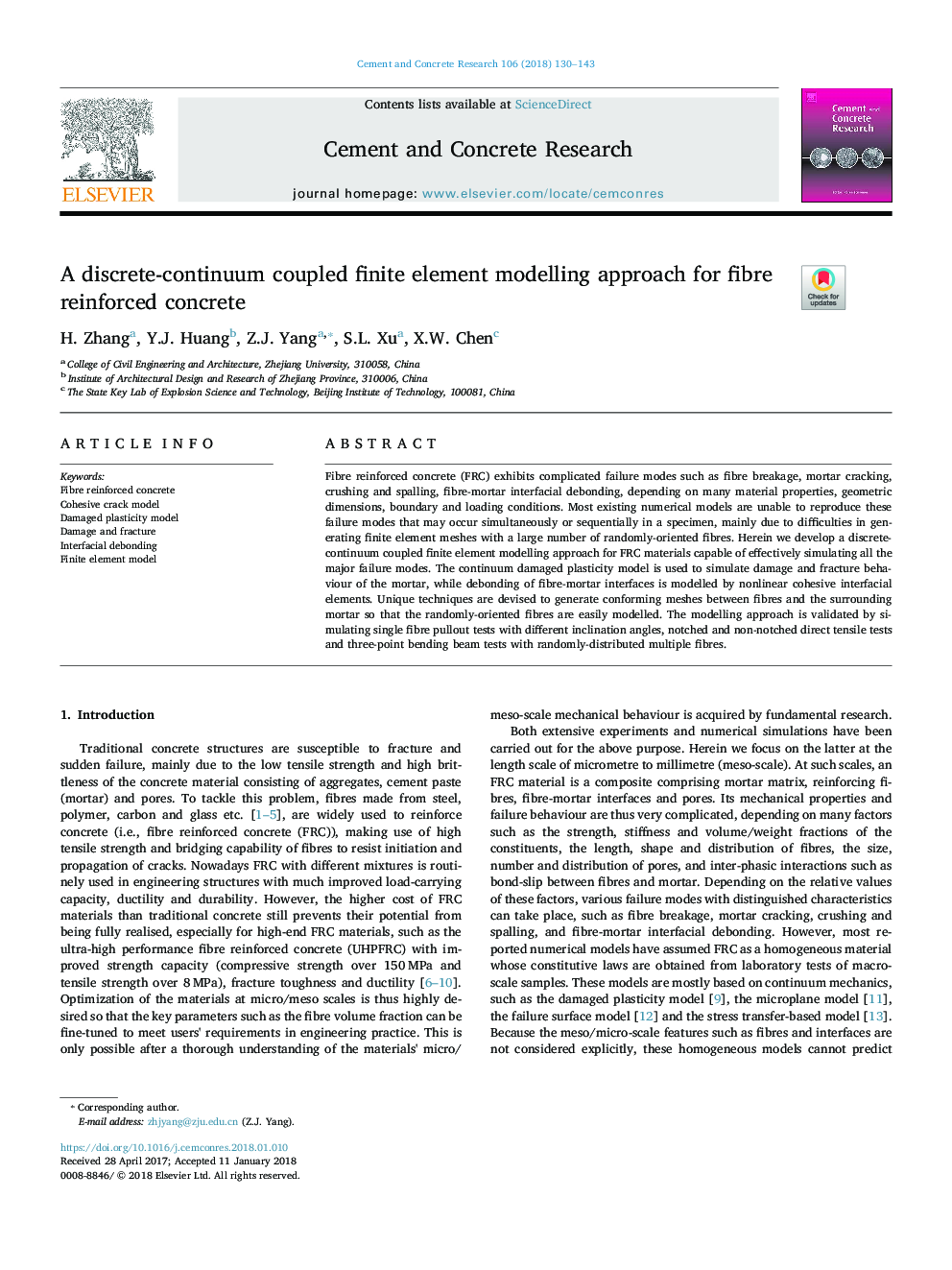| Article ID | Journal | Published Year | Pages | File Type |
|---|---|---|---|---|
| 7884800 | Cement and Concrete Research | 2018 | 14 Pages |
Abstract
Fibre reinforced concrete (FRC) exhibits complicated failure modes such as fibre breakage, mortar cracking, crushing and spalling, fibre-mortar interfacial debonding, depending on many material properties, geometric dimensions, boundary and loading conditions. Most existing numerical models are unable to reproduce these failure modes that may occur simultaneously or sequentially in a specimen, mainly due to difficulties in generating finite element meshes with a large number of randomly-oriented fibres. Herein we develop a discrete-continuum coupled finite element modelling approach for FRC materials capable of effectively simulating all the major failure modes. The continuum damaged plasticity model is used to simulate damage and fracture behaviour of the mortar, while debonding of fibre-mortar interfaces is modelled by nonlinear cohesive interfacial elements. Unique techniques are devised to generate conforming meshes between fibres and the surrounding mortar so that the randomly-oriented fibres are easily modelled. The modelling approach is validated by simulating single fibre pullout tests with different inclination angles, notched and non-notched direct tensile tests and three-point bending beam tests with randomly-distributed multiple fibres.
Keywords
Related Topics
Physical Sciences and Engineering
Engineering
Industrial and Manufacturing Engineering
Authors
H. Zhang, Y.J. Huang, Z.J. Yang, S.L. Xu, X.W. Chen,
